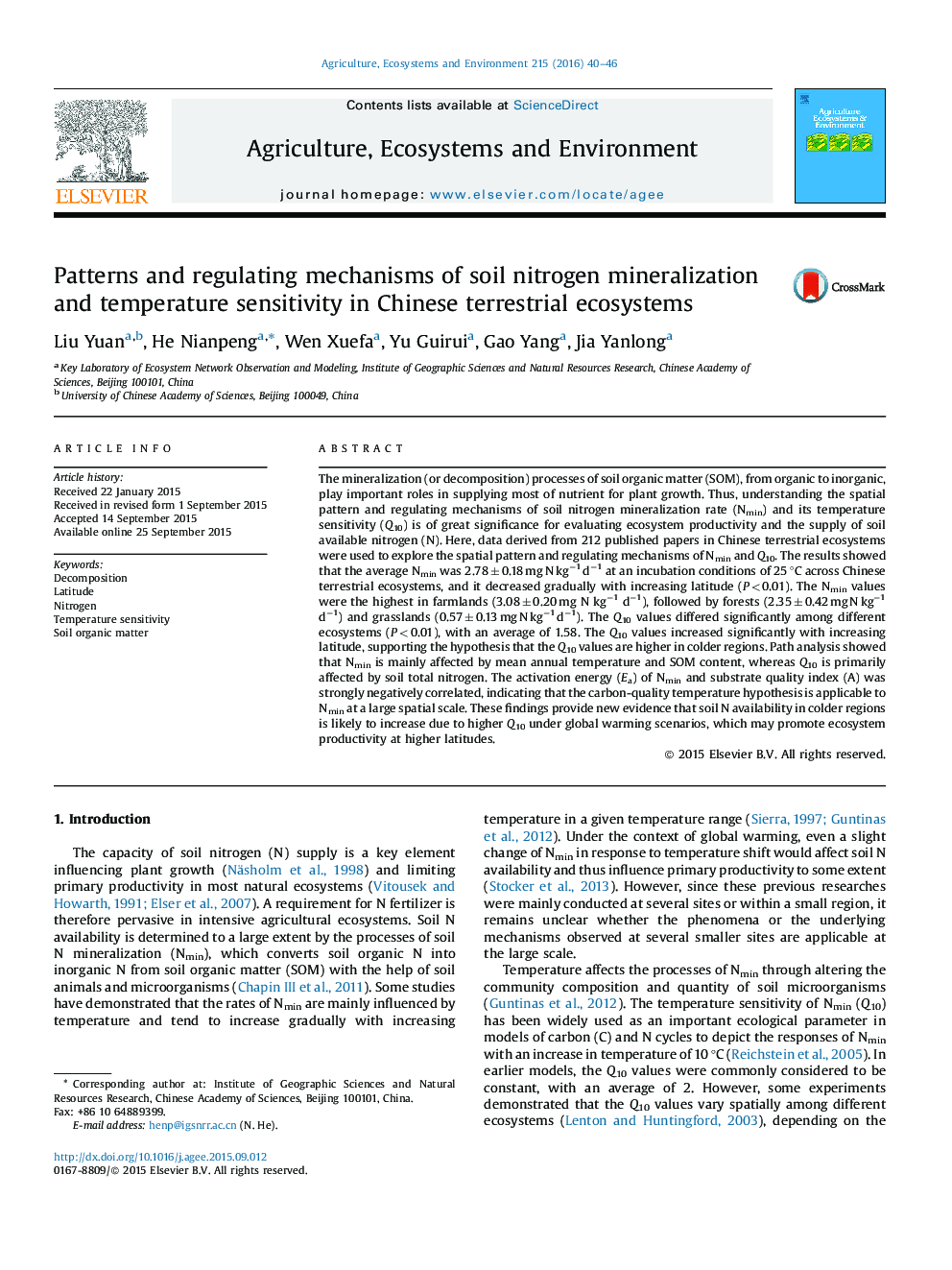| کد مقاله | کد نشریه | سال انتشار | مقاله انگلیسی | نسخه تمام متن |
|---|---|---|---|---|
| 2413686 | 1552037 | 2016 | 7 صفحه PDF | دانلود رایگان |
• Rates of soil net nitrogen mineralization (Nmin) decreased with increasing latitude.
• Temperature sensitivity of Nmin increased with increasing latitude.
• Temperature sensitivity of Nmin was mainly affected by soil substrate quality.
• The carbon-quality temperature hypothesis is applicable to Nmin.
• Increasing Nmin under warming scenarios may promote productivity at higher latitude.
The mineralization (or decomposition) processes of soil organic matter (SOM), from organic to inorganic, play important roles in supplying most of nutrient for plant growth. Thus, understanding the spatial pattern and regulating mechanisms of soil nitrogen mineralization rate (Nmin) and its temperature sensitivity (Q10) is of great significance for evaluating ecosystem productivity and the supply of soil available nitrogen (N). Here, data derived from 212 published papers in Chinese terrestrial ecosystems were used to explore the spatial pattern and regulating mechanisms of Nmin and Q10. The results showed that the average Nmin was 2.78 ± 0.18 mg N kg−1 d−1 at an incubation conditions of 25 °C across Chinese terrestrial ecosystems, and it decreased gradually with increasing latitude (P < 0.01). The Nmin values were the highest in farmlands (3.08 ± 0.20 mg N kg−1 d−1), followed by forests (2.35 ± 0.42 mg N kg−1 d−1) and grasslands (0.57 ± 0.13 mg N kg−1 d−1). The Q10 values differed significantly among different ecosystems (P < 0.01), with an average of 1.58. The Q10 values increased significantly with increasing latitude, supporting the hypothesis that the Q10 values are higher in colder regions. Path analysis showed that Nmin is mainly affected by mean annual temperature and SOM content, whereas Q10 is primarily affected by soil total nitrogen. The activation energy (Ea) of Nmin and substrate quality index (A) was strongly negatively correlated, indicating that the carbon-quality temperature hypothesis is applicable to Nmin at a large spatial scale. These findings provide new evidence that soil N availability in colder regions is likely to increase due to higher Q10 under global warming scenarios, which may promote ecosystem productivity at higher latitudes.
Journal: Agriculture, Ecosystems & Environment - Volume 215, 1 January 2016, Pages 40–46
